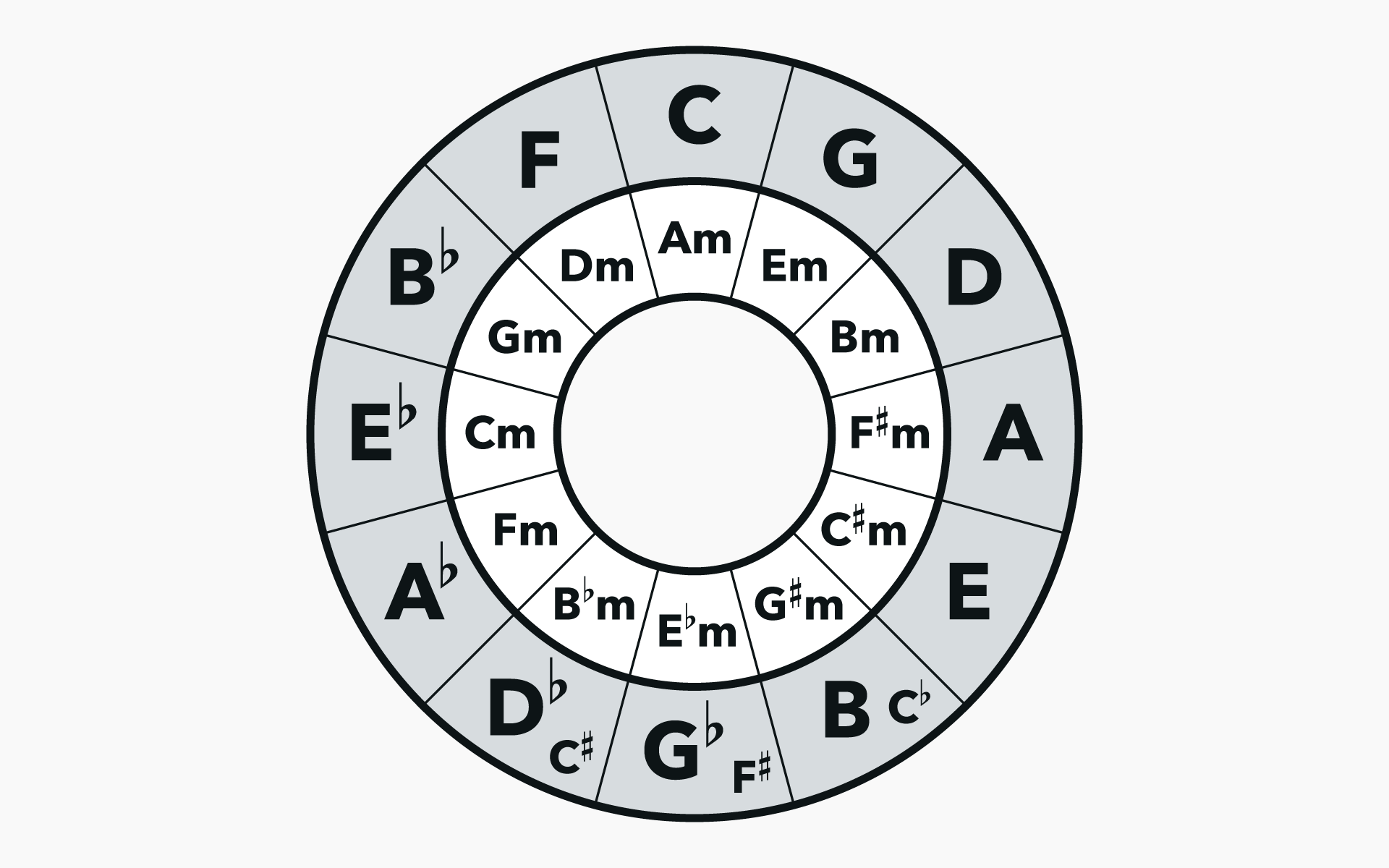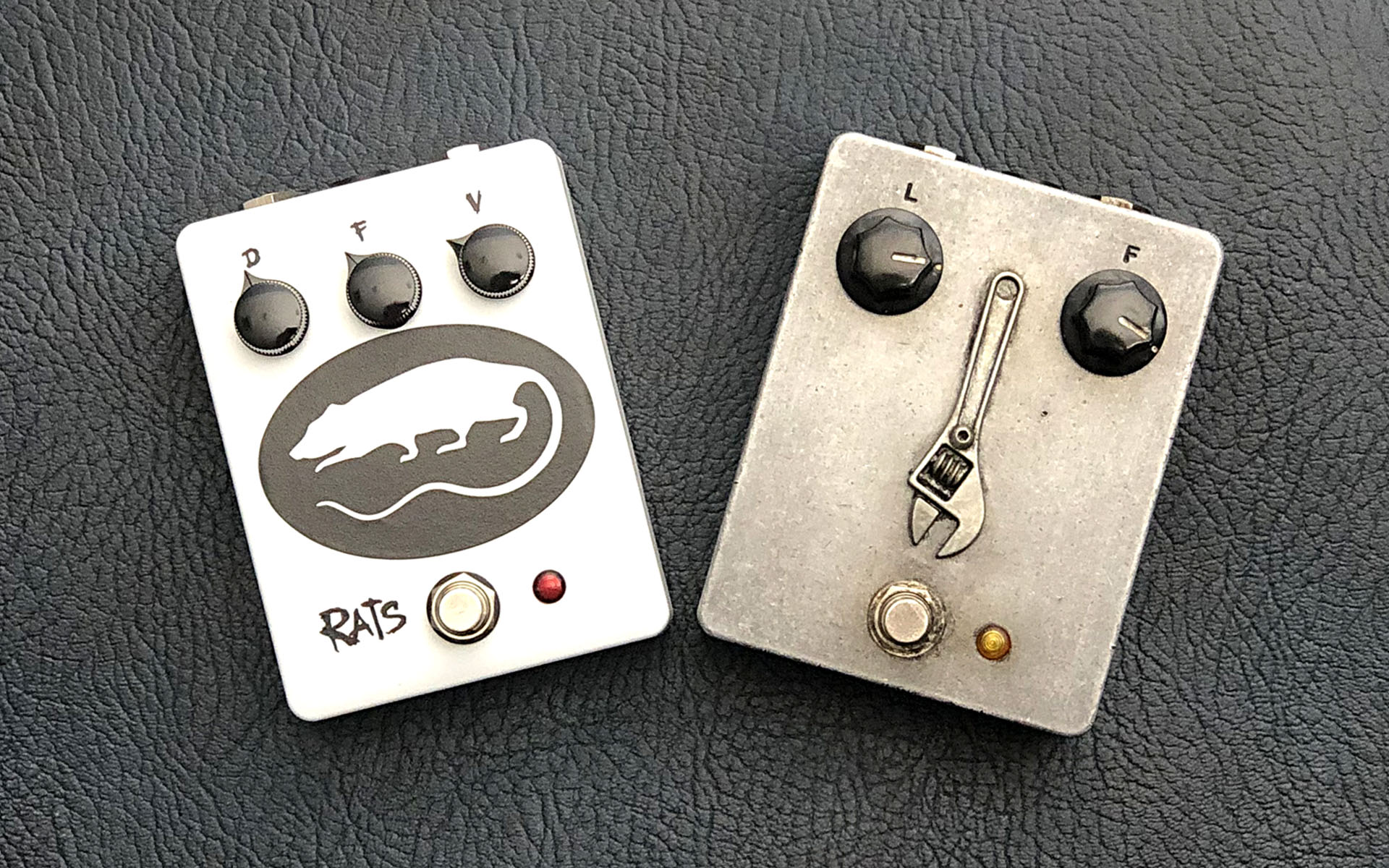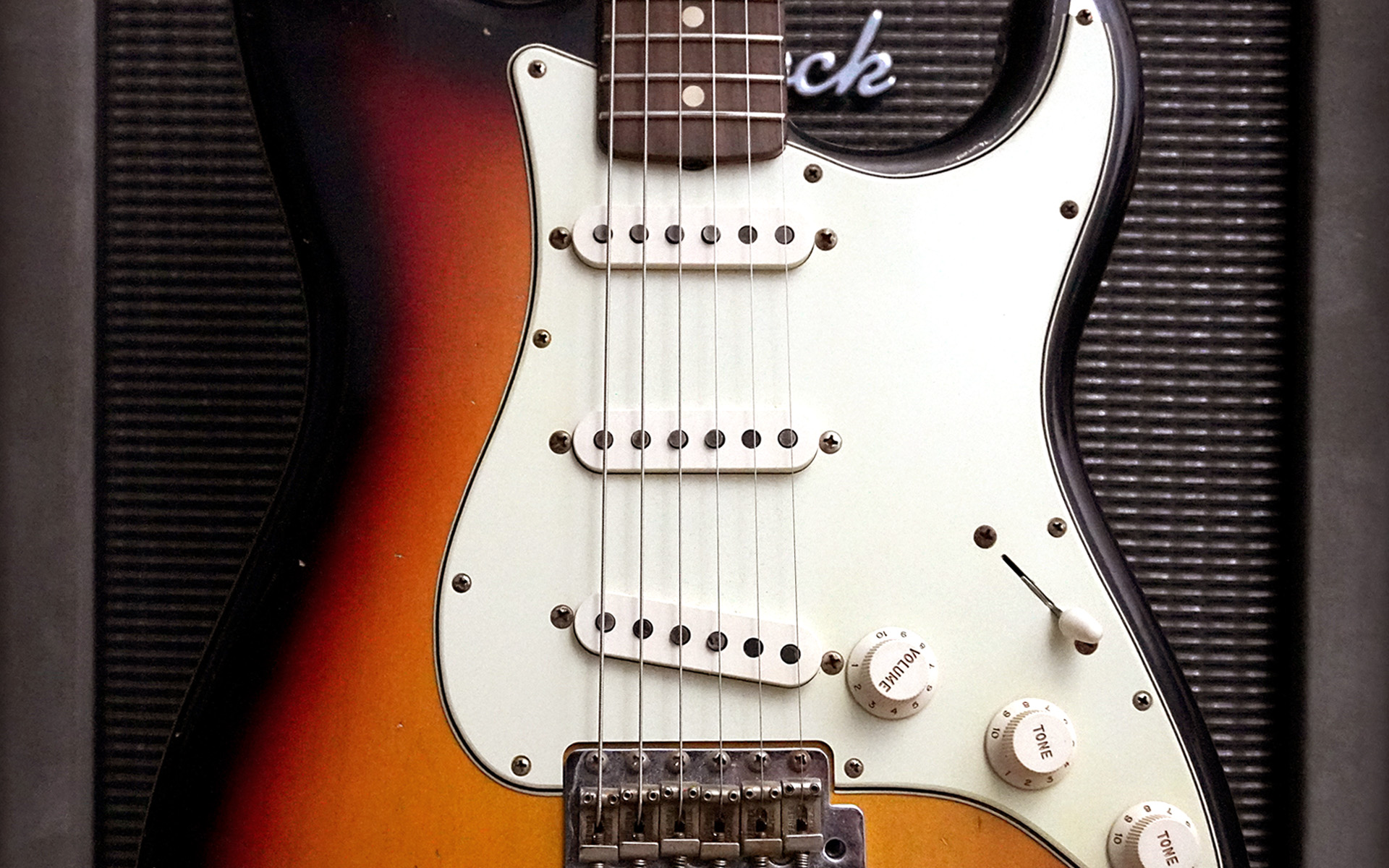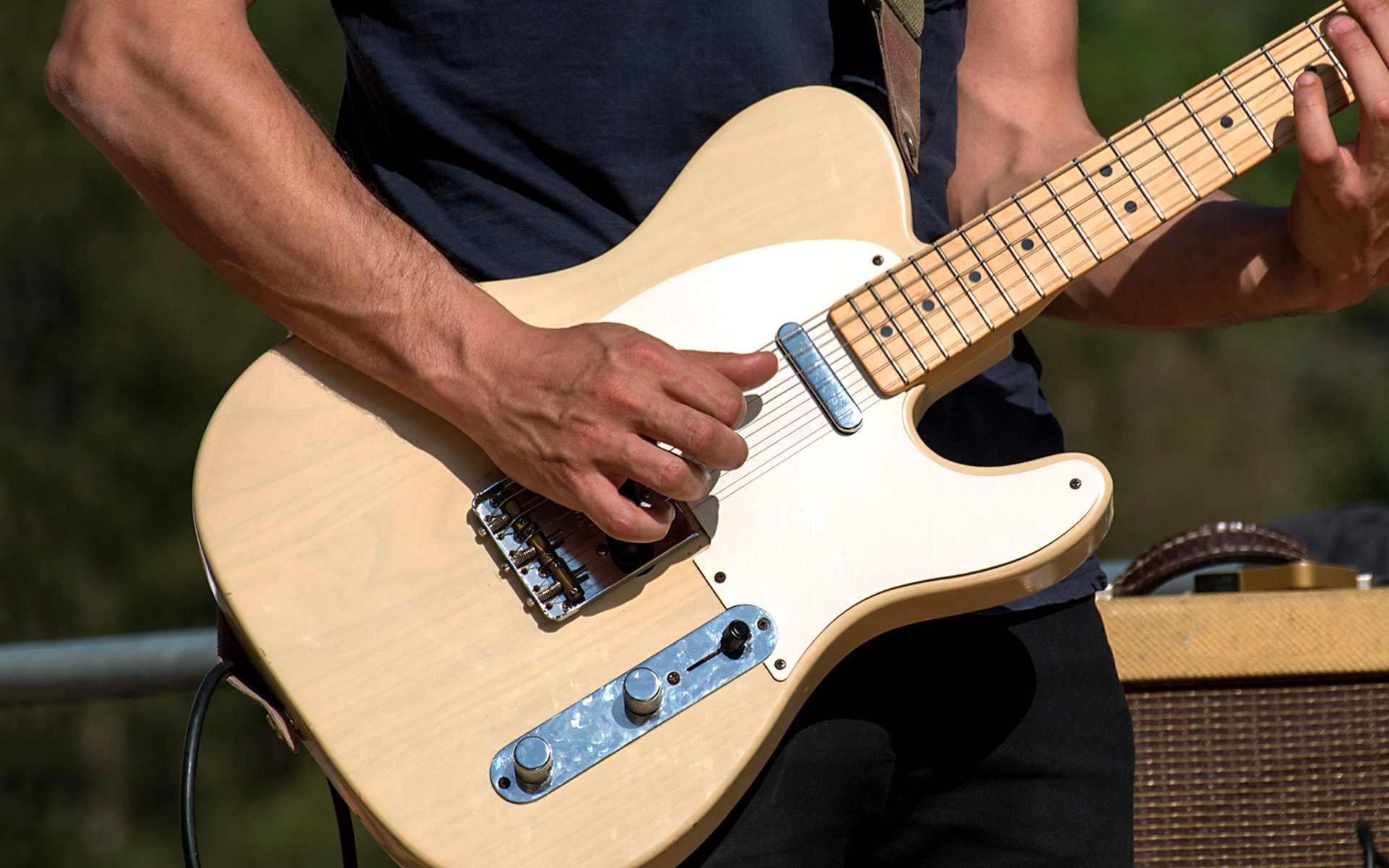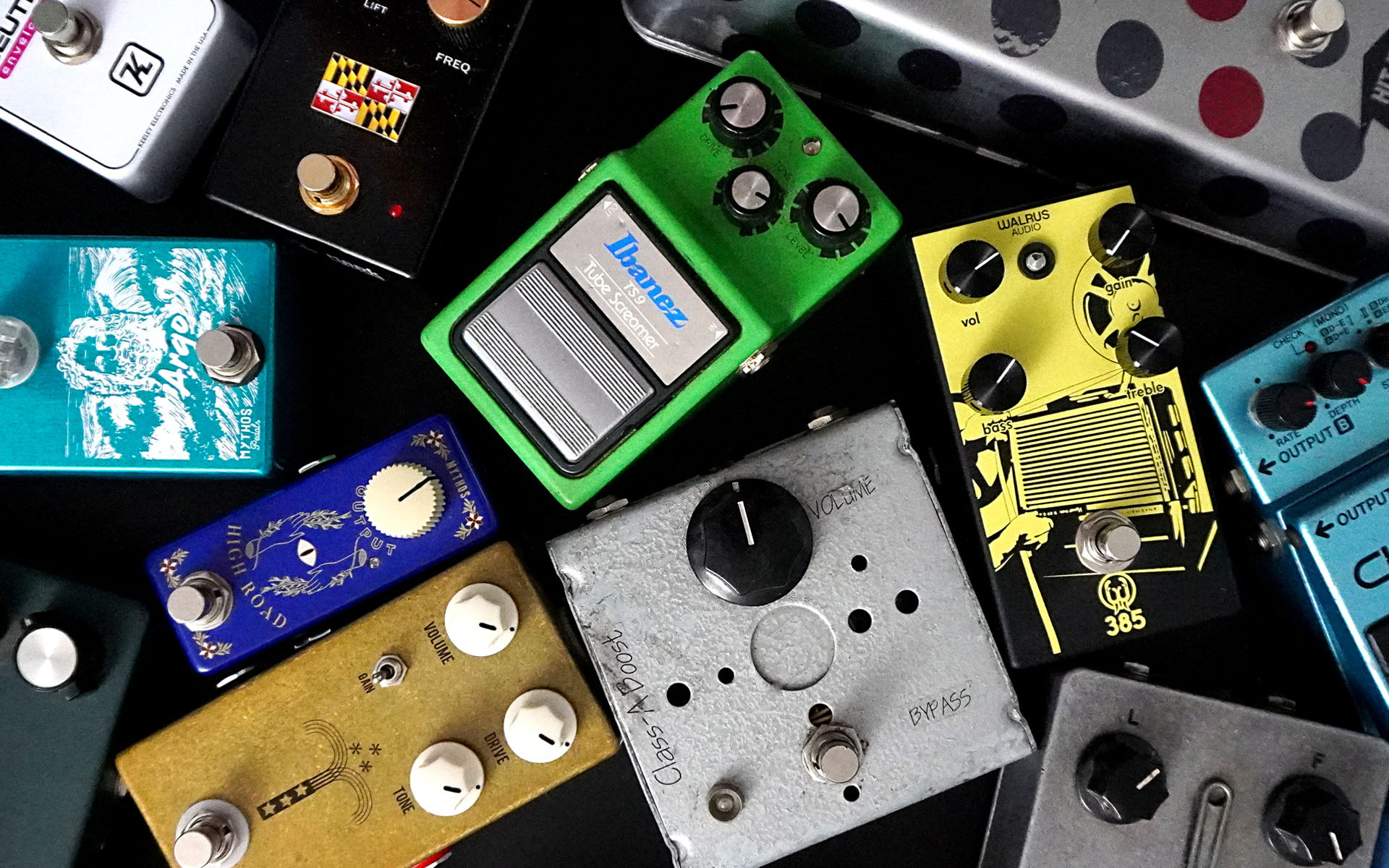Here is this week’s amazing pedal to add to your arsenal of tone shapers: Neunaber WET Reverb pedal.
For those of you who are obsessed with D-Style amps, this is a pedal that is an absolute must have for your effects loop. For others who just need amazing reverb sounds for your non-reverb amp, or even supplemental reverb sounds for your amp that might already have reverb, well, this is a must-have too!
The Neunaber Technology WET Reverb is roughly the size of a phase 90 (already a plus in my book!) and delivers a very high quality reverb sound. Simple controls are MIX, which controls the amount of reverb added to your original signal, and DEPTH, which controls, in lay terms, how big the space is in which you are “playing,” whether a small room or a large cathedral.
TAKE A GUITAR COURSE WITH THADDEUS HOGARTH
Many “D-style” amps do not come with a Reverb tank and, since they have built-in overdrive, for best sound quality, require use of effects such as reverb and delay through the effects loop of the amp. In an upcoming review, I will tell you about an amazing little amp I now play called Dumbalina, which is a mini-Dumble-inspired amp with a +4 effect loop. I use the WET reverb pedal through the +4 effects loop of my Dumbalina and the results are no less than astounding.
The WET reverb does not have the usual tone-sucking qualities that other reverb pedals might have when played through the effects loop. With a unity gain buffer built in, what you put in is what you get out! This pedal seems to love effect loops. True bypass switching ensures that you (purists) retain your original tone when the pedal is not engaged.
Within a couple of seconds of switching the pedal on, I was able to dial in some amazing room-filling reverb sounds that created depth and volume from a 112 cab. It was quite amazing.
In addition, I was reminded about the importance of using high-quality cables for high-quality pedals such as the WET. Geeking with my Dumble Club friends usually yields a number of enlightening discoveries. We plug a lot of stuff in and out and try different configurations and cabs and pedals. After a couple of “dude, where’s my tone?” moments, we realized (remembered) that certain patch cables were the cause of some of the tone-sucking problems!
So here is a reminder: If you use generic cables of low quality or great length, you might perceive an increase in brightness as the buffer in the WET pedal restores your original signal to its full spectrum. So don’t mistake it to mean that the WET pedal changes your tone. Here is a quote from the FAQ page of the Neunaber website:
Some users have posted that the WET™ Reverb sounds “bright.” Is this true?
The WET™ Reverb pedal is true bypass. When bypassed, if you don’t use a buffer (or other “always on” pedal) before the WET™ Reverb, you will lose the natural brightness of your guitar signal due to the high-impedance of your pickups and cable capacitance. When engaged, the WET™ Reverb’s buffer restores this natural brightness. So, it only sounds like the signal gets brighter; when in fact, your signal is duller with the pedal bypassed.
The buffer in the WET™ Reverb is completely transparent and does not change your tone; this has been verified by testing with an Audio Precision measurement system. Check out the specifications to see for yourself.
Most true-bypass pedals will have this problem, which can be avoided by doing one of the following:
1) use the pedal in an FX loop
2) use a buffer or other “always on” pedal before the true-bypass pedal
3) use active pickups
4) (less preferred) use shorter, low-capacitance cables
Simple test: Use high-quality short cables through the effect loop and you will perceive no difference in tone when you activate the pedal: This was an eye opener! Thanks, Brian!
The WET reverb pedal is the only reverb pedal I found that sounded amazing through the effect loop whether it was a buffered loop or a +4. This was with no Dumble-ator or clone thereof, or adjustment of levels; just plug it in and play your music.
For those of you with your expensive Dumble-ator clones that want to know why this is, (I was curious too) here is a simple explanation from Brian:
“Yes, there is a technical explanation for why the WET Reverb doesn’t suck tone in a Dumble clone effects loop. The Dumble loop is unbuffered and requires an external buffer (such as a Dumble-ator) to be used with many pedals. The WET Reverb has a low-noise buffer built into it, which is engaged when the effect is not bypassed. This buffer has very high input impedance and low output impedance, so it will not load down the effects send and can easily drive the effects return. Also, the buffer is unity-gain, so whatever signal level goes into it is the same level that comes out.
And, by the way, in case you were wondering, the WET pedal sounds just as good through the front input of the amp.
Another great feature of this pedal is a built-in Li-Poly rechargeable option. Just plug in a standard 9-volt center negative supply and with a simple LED glow when in bypass mode, the pedal lets you know it is charging. No battery memory problems with Li-Poly. Unfortunately, the Li-Poly rechargeable option is no longer available. (Too bad, because it was one of those “how come no-one thought of this before? ” features.
The WET reverb pedal gets the thumbs up and the highest rating from the Quest for Tone! A++++++
Here is a video demo of the pedal in action:
STUDY GUITAR ONLINE WITH BERKLEE


